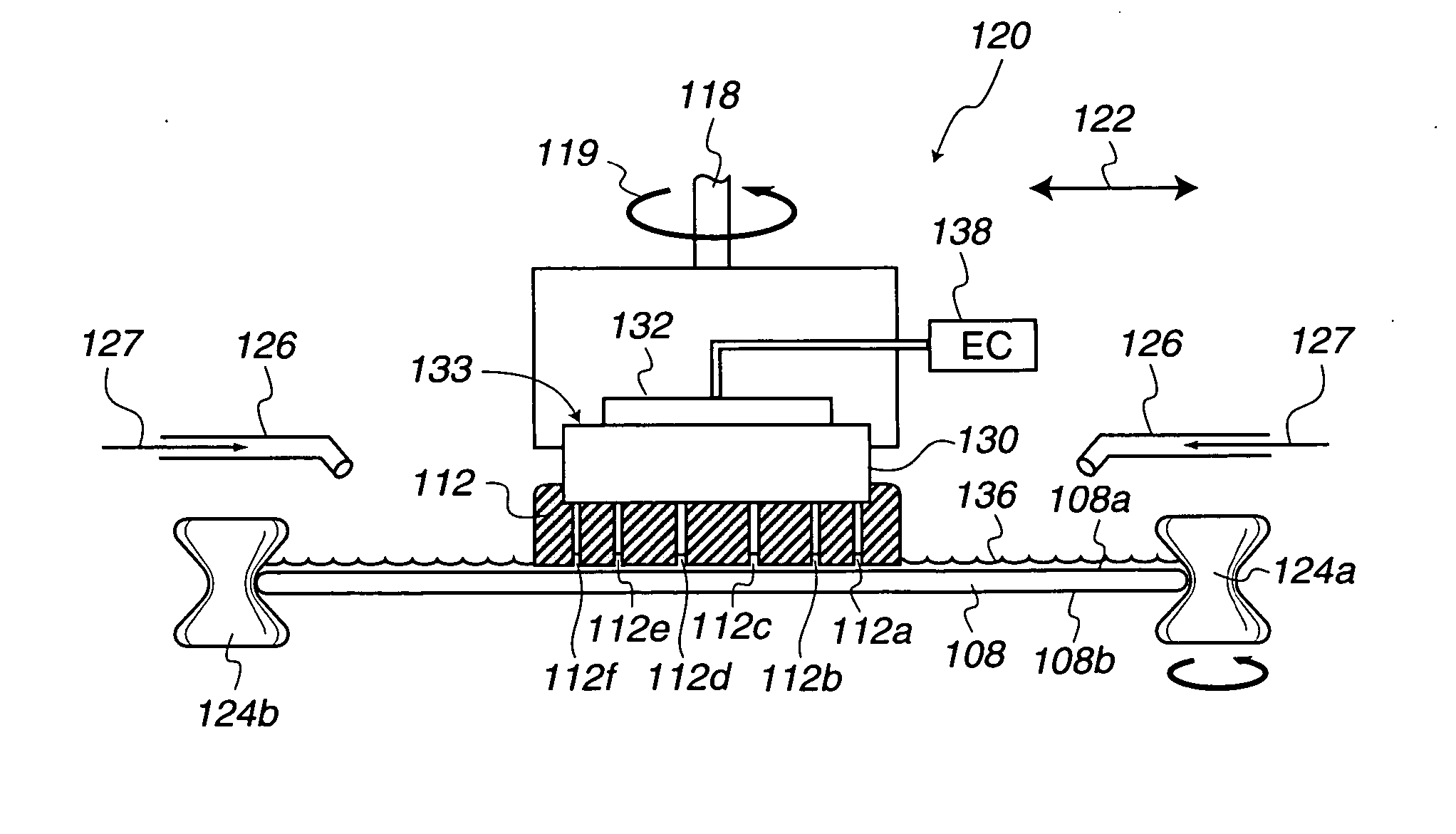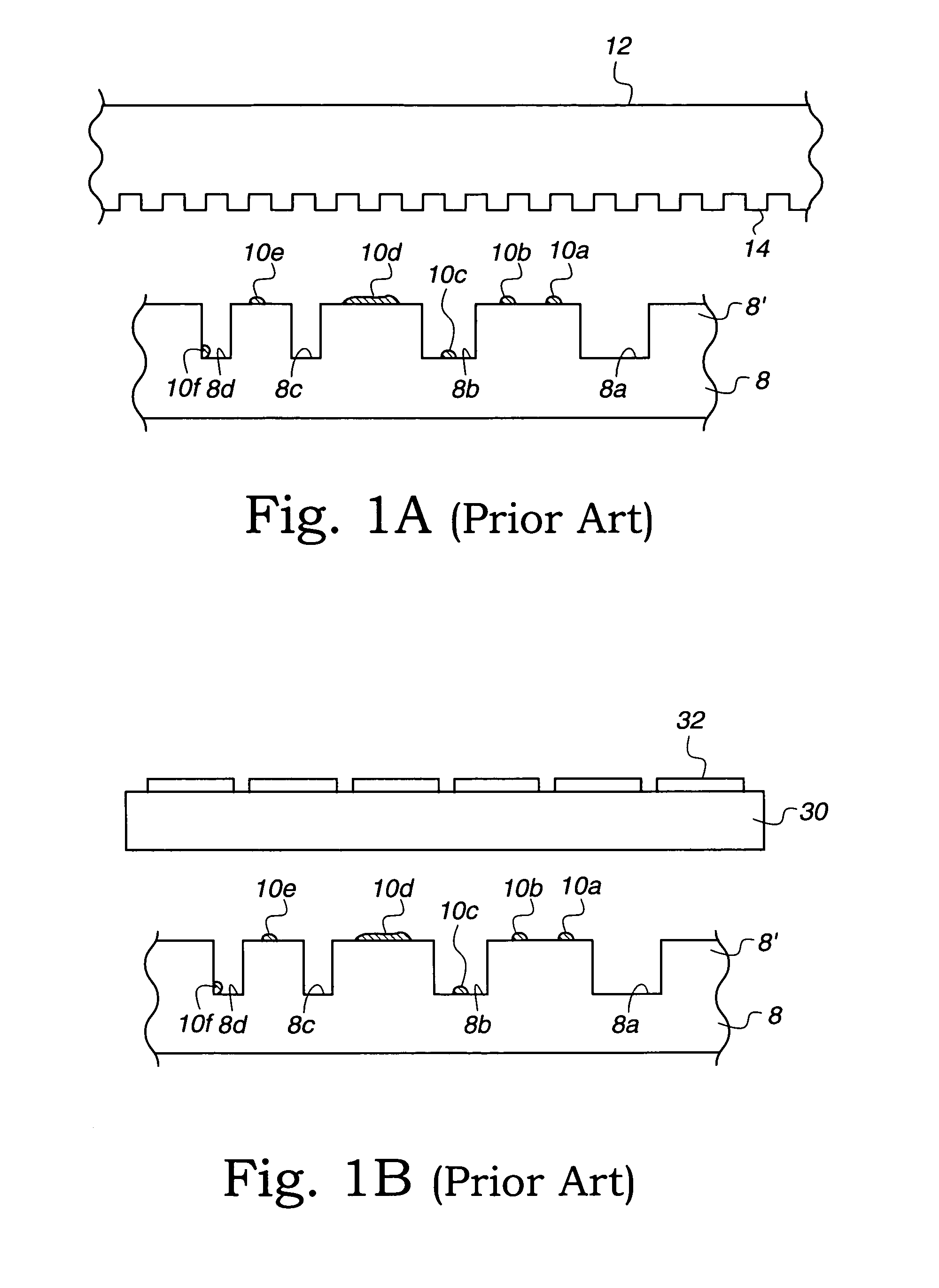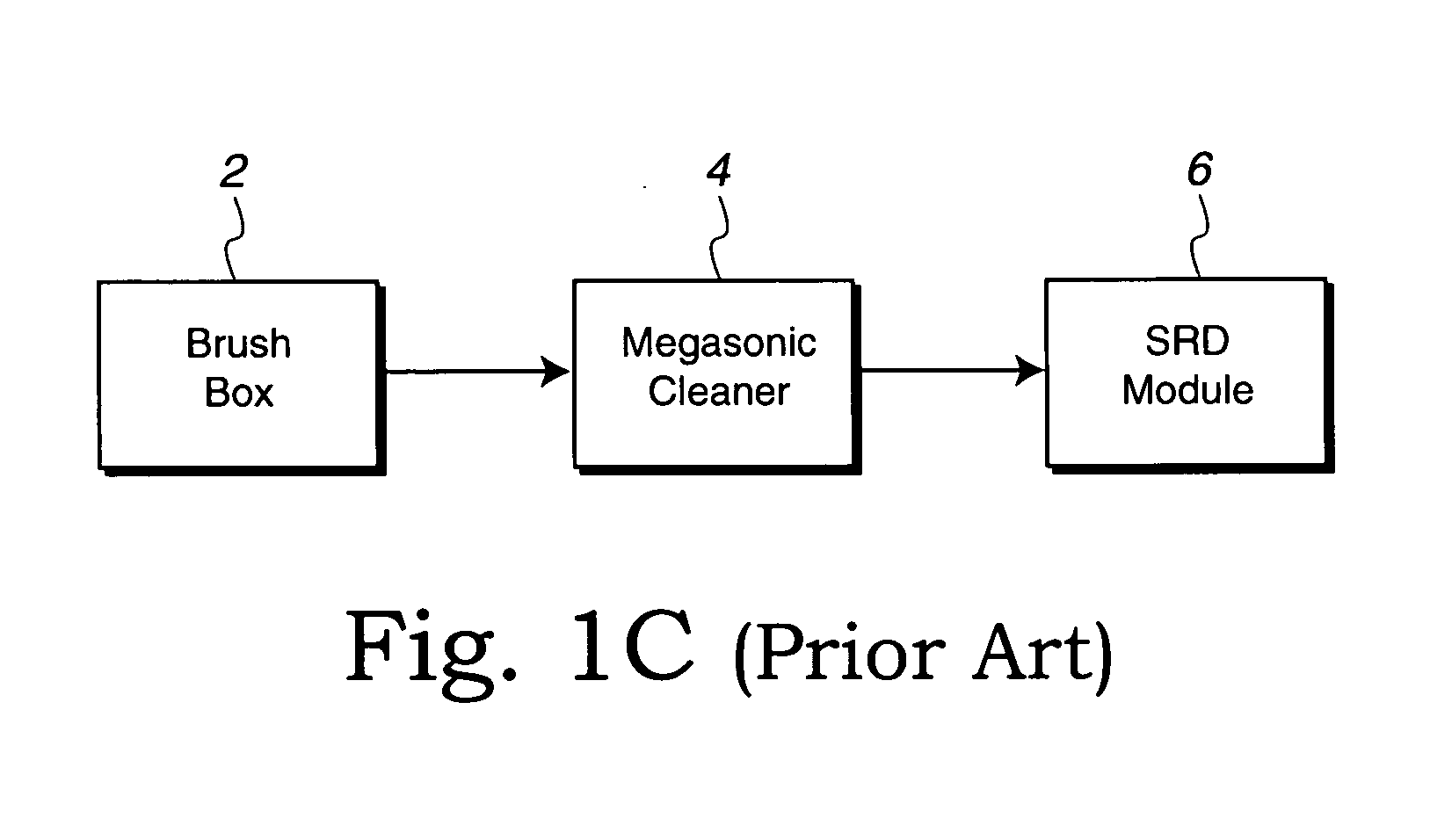Brush scrubbing-high frequency resonating substrate processing system
a processing system and high frequency technology, applied in the direction of cleaning with liquids, photosensitive materials, instruments, etc., can solve the problems of affecting the performance of integrated circuit devices, brush scrubbing operations can generally only dislodge contaminants defined on planer surfaces, and brush scrubbing operations may exhibit a rather poor cleaning capacity
- Summary
- Abstract
- Description
- Claims
- Application Information
AI Technical Summary
Benefits of technology
Problems solved by technology
Method used
Image
Examples
Embodiment Construction
[0048] Several exemplary embodiments of the invention will now be described in detail with reference to the accompanying drawings. FIGS. 1A, 1B, and 1C are discussed above in the “Background of the Invention” section.
[0049] The embodiments of the present invention provide an apparatus and a method for cleaning a semiconductor substrate by concurrently using a combination of high frequency acoustic energy cleaning and brush scrubbing in a stand alone cleaning module. In one embodiment, a brush scrubbing-high frequency acoustic energy cleaning assembly capable of substantially removing contaminants lodged on wafer planer surfaces or deep wafer topography features. In one embodiment, a flat brush scrubbing-acoustic energy (AE) cleaning assembly is provided. The flat brush scrubbing-AE cleaning assembly is includes a housing, a transducer having a crystal bonded to a resonator, and an arm configured to move the housing and thus the flat brush scrubbing-AE cleaning assembly. A flat brus...
PUM
 Login to View More
Login to View More Abstract
Description
Claims
Application Information
 Login to View More
Login to View More - R&D
- Intellectual Property
- Life Sciences
- Materials
- Tech Scout
- Unparalleled Data Quality
- Higher Quality Content
- 60% Fewer Hallucinations
Browse by: Latest US Patents, China's latest patents, Technical Efficacy Thesaurus, Application Domain, Technology Topic, Popular Technical Reports.
© 2025 PatSnap. All rights reserved.Legal|Privacy policy|Modern Slavery Act Transparency Statement|Sitemap|About US| Contact US: help@patsnap.com



